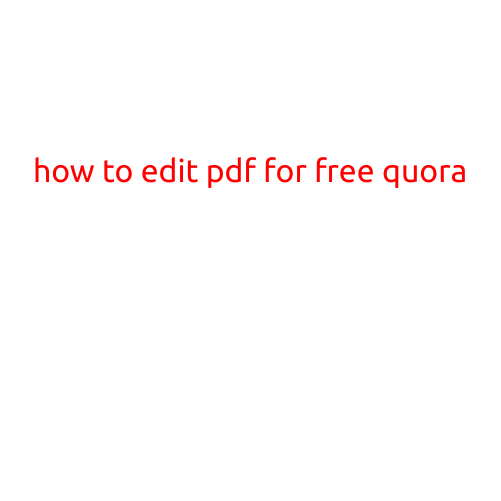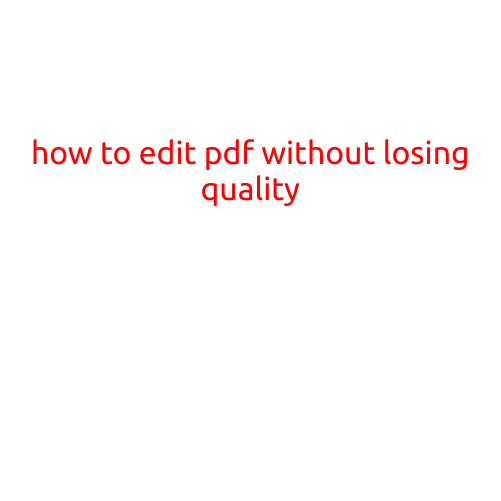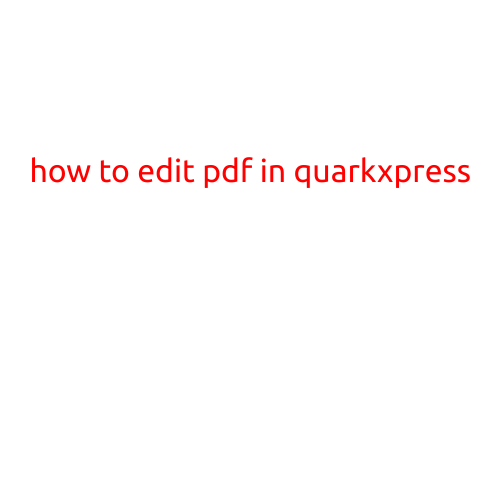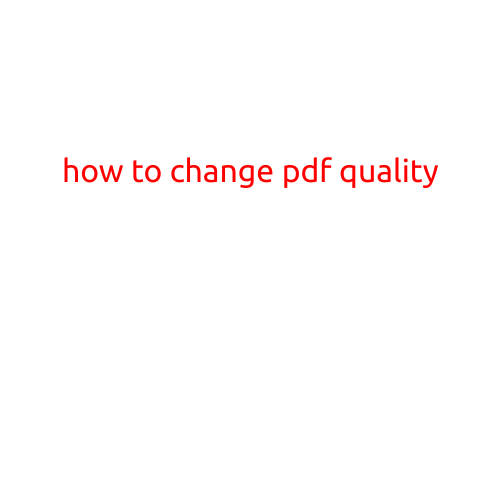
How to Change PDF to QIF
Are you tired of dealing with PDF files that are essential for reconciling your accounts, but not easily convertible to QIF format? Do you want to import your financial transactions from a PDF statement to a QIF file for use with your financial software? Look no further! In this article, we’ll guide you through the process of changing a PDF file to a QIF file, making it easier to manage your finances.
What is QIF?
QIF (Quicken Interchange Format) is a file format used to import financial transactions from various sources, such as bank statements, into personal finance software like Quicken, GnuCash, and others. QIF files are widely supported and can be easily imported into various financial applications.
Why convert PDF to QIF?
Converting PDF to QIF can simplify the process of reconciling your accounts and managing your finances. By turning your PDF statement into a QIF file, you can:
- Reconcile your accounts: QIF files allow you to easily import transactions from your bank statement into your financial software, making it easier to reconcile your accounts.
- Streamline data entry: Converting PDF to QIF eliminates the need to manually enter transactions, saving you time and reducing errors.
- Use financial software: QIF files can be imported into various financial software, allowing you to track your spending, create budgets, and plan for the future.
Methods to convert PDF to QIF
There are several ways to convert a PDF file to a QIF file, including:
- Manual Conversion: Use a text editor to manually extract and format the transaction data from the PDF file and enter it into a QIF file. This method is time-consuming and prone to errors.
- Online Conversion Tools: Utilize online tools that can automatically extract and convert PDF data to QIF, such as Online Convert, Convertio, or SmallPDF.
- Software Conversion: Employ software applications specifically designed for PDF to QIF conversion, such as PDFMate, ABBYY FineReader, or PDF Converter.
Step-by-Step Conversion Guide
To convert a PDF file to a QIF file using an online conversion tool, follow these steps:
- Upload your PDF file: Go to an online conversion tool, such as Convertio, and upload your PDF file from your computer or cloud storage.
- Select the conversion format: Choose the QIF format as your output option.
- Adjust settings (optional): Depending on the conversion tool, you may be able to adjust settings, such as date and time formats, or transaction separators.
- Start the conversion: Click the “Convert” button to initiate the conversion process.
- Download your QIF file: Once the conversion is complete, download the resulting QIF file to your computer.
Tips and Considerations
- Accuracy: When converting PDF to QIF, ensure that the accuracy of the conversion is high, as incorrect data can lead to errors in your financial records.
- Format compatibility: Check that your chosen conversion tool is compatible with the QIF format used by your financial software.
- Data security: When uploading your PDF file, ensure that the conversion tool is secure and trustworthy.
Conclusion
Converting PDF to QIF can simplify the process of managing your finances and reconciling your accounts. By following this guide and using a reliable conversion tool, you can easily convert your PDF statement into a QIF file, streamlining your financial data entry and analysis. Remember to carefully review the accuracy of the conversion and adjust settings as needed to ensure the best possible results.





